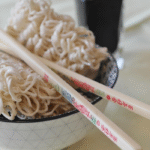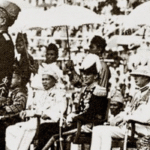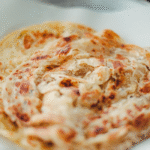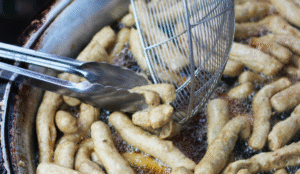Silat Martial Art: 10 Unique Styles of Silat
In the heart of Southeast Asia lies a martial tradition rich with mystery, discipline, and cultural depth—silat martial art. More than just a method of self-defense, silat in Malaysia embodies a heritage passed down through generations, rooted in spiritual belief, artistic expression, and community identity.
From rural kampungs to international arenas, Malaysian silat martial art has evolved into both a cultural symbol and a competitive sport. In this article, we explore the history of silat martial art in Malaysia, its spiritual and cultural foundations, its many styles, and how it’s still a vibrant force in modern Malaysian society.
Frequently Asked Questions (FAQ)
1. What is the origin of Silat?
Silat is believed to have originated in Southeast Asia, particularly in the Malay Archipelago, which includes modern-day Malaysia, Indonesia, Brunei, and southern Thailand. Its roots go back hundreds of years, developed by local warriors for self-defense and warfare. In Malaysia, Silat was more than just a fighting technique—it was a way of life that combined martial skill with spiritual discipline, traditional values, and cultural identity.
2. What is Silat in Malaysia?
In Malaysia, Silat is a traditional martial art that blends physical movement with spiritual and cultural elements. It’s often performed during ceremonial events, weddings, and national celebrations, not just for combat but also to express artistry and heritage. Malaysian martial arts includes a wide variety of styles, each with its own philosophy, movement patterns, and techniques passed down through generations.
3. What does Silat do?
Silat teaches practitioners how to defend themselves using punches, kicks, joint locks, sweeps, and even weapon techniques. But it’s more than just fighting—it also improves discipline, focus, balance, and coordination. Silat emphasizes respect for teachers, inner strength, and connection to one’s roots. Whether used for self-defense, fitness, or tradition, Silat helps shape both body and character.
4. What is another name for Silat?
Silat is sometimes referred to as “Pencak Silat”, especially in Indonesia. In Malaysia, it’s often just called Silat, though some specific styles have names like Silat Gayong, Silat Cekak, or Silat Lincah. These different names reflect the diverse schools and lineages found across Southeast Asia, each with unique forms, rituals, and philosophies.
5. What are the benefits of Silat?
Silat offers many benefits, both physical and mental. It helps improve strength, flexibility, reflexes, and endurance, while also boosting self-confidence, discipline, and mental focus. Practicing Silat also fosters a deep appreciation for Malaysian culture and tradition, making it not just a martial art, but a meaningful way to connect with heritage and community.
What is Silat?
Silat is a collective term for indigenous martial arts practiced across the Malay Archipelago, especially in Malaysia, Indonesia, southern Thailand, and Brunei. In Malaysia, silat martial art has taken on a distinct identity. It’s more than blocks and strikes—it’s performance, prayer, tradition, and identity all rolled into one.
The movements of silat martial art are often poetic—graceful yet deadly, combining low stances, deceptive footwork, rhythmic patterns, and powerful strikes. But to call it merely a martial art would be incomplete. Silat is also a form of cultural preservation, storytelling, and spiritual practice.
The History of Silat in Malaysia
The history of silat martial art in Malaysia stretches back centuries, intertwined with folklore, ancient kingdoms, and regional defense tactics. It’s believed that silat developed organically among Malay warriors as a means of survival and protection during the time of the Srivijaya and Malacca Sultanates.
Silat was once a vital part of warrior training for Malay nobles and soldiers. During the reign of the Melakan Empire in the 15th century, silat was taught alongside Quranic studies, diplomacy, and poetry. It was a balanced path—learning to wield a blade while mastering restraint.
As Malaysia moved into the colonial period, silat martial art became a form of silent resistance. Practiced secretly in villages, it kept the Malay identity alive during times of suppression.
Silat Culture and Heritage
The silat culture and heritage in Malaysia is deeply spiritual. Traditional masters, known as guru silat, often teach not just physical forms but also inner discipline, prayer, and Malay metaphysics.
Silat martial art is performed during:
- Weddings: As a form of ceremonial entertainment.
- Cultural festivals: Like Pesta Gendang and Hari Raya performances.
- National events: Including National Day parades and cultural exhibitions.
- Rites of passage: Where young practitioners undergo spiritual initiation.
In this context, traditional Malay silat isn’t just about fighting. It’s about honoring ancestors, preserving discipline, and understanding one’s role in the community.
The Spiritual Element of Silat
Many silat martial art traditions incorporate elements of Islamic mysticism (tasawuf) and animism. Prayers, mantras (doa), and ritual cleansing ceremonies are often part of training. Some silat styles also include meditation or spiritual breathing techniques known as nafas.
In ancient times, it was believed that silat practitioners developed ilmu kebal—mystical protection from harm. While modern silat is less focused on the supernatural, the spiritual thread remains strong in many schools.
This connection between body, mind, and spirit is what makes silat martial art not just a form of self-defense, but a complete way of life.
Types of Silat in Malaysia
There are more than 150 recognized types of silat martial art in Malaysia, each with its own origin, style, and philosophy. Here are a few notable ones:
1. Silat Seni Gayong
Founded by Dato’ Meor Abdul Rahman, Gayong is one of the most well-known and widely practiced silat martial art systems. It incorporates striking, grappling, and weapons training. Gayong is also known for its hierarchical, military-style discipline and is practiced by military and police forces in Malaysia.
2. Silat Cekak Hanafi
A purely self-defense style, Cekak Hanafi was revived by Ustaz Hanafi Haji Ahmad in the 1960s. It focuses on efficient movements, direct counters, and close-range fighting. What makes it unique is its emphasis on not attacking first—a reflection of its philosophical grounding.
3. Silat Lincah
As its name suggests, Lincah (meaning “agile”) is known for its fast, fluid movements and dramatic takedowns. Practitioners learn acrobatics and evasive maneuvers. It’s one of the more visually striking styles of Malaysian silat martial art.
4. Silat Harimau
Originally from the Minangkabau people but practiced in parts of Malaysia, Harimau mimics the movements of a tiger—low stances, clawing strikes, and powerful foot sweeps. It’s intense and grounded in primal instincts.
5. Silat Pulut
Silat Pulut is a ceremonial and artistic form of silat martial art, often performed during weddings or royal events. Unlike combative silat, Pulut focuses on flow, grace, and showmanship. Practitioners move in rhythm to traditional music, usually a gendang or serunai ensemble, and perform choreographed movements that symbolize readiness, respect, and elegance. While it’s non-combative, it requires high control and mastery of form.
6. Silat Jawi
Originating from the northern states of Malaysia like Kedah and Perlis, Silat Jawi emphasizes inner balance, breath control, and energy flow (nafas). Its movements are soft yet strategic, reflecting deep Islamic and Malay spiritual values. This style is often associated with rituals, prayers, and the preservation of silat culture and heritage.
7. Silat Kalimah
Silat Kalimah is rooted deeply in Islamic teachings and the Malay language. Each movement is named after religious or linguistic concepts, and the form teaches practitioners to “strike with meaning.” Defense is prioritized over aggression, and emphasis is placed on ethical conduct, making it as much a spiritual practice as a martial one.
8. Silat Melayu Asli
Silat Melayu Asli refers to “pure” or “original” silat martial art forms that are preserved in kampungs and passed down through oral tradition. These styles vary by region and family lineage and are often not commercialized. They tend to include both empty-hand techniques and weapon training (kris, parang, tongkat), and carry deep historical significance.
9. Silat Sendeng
One of the oldest known types of silat martial art in Malaysia, Silat Sendeng is known for its effectiveness in combat. Originating from Johor, this style focuses on swift counters, deceptive movements, and powerful low-line strikes. Practitioners learn how to turn an opponent’s aggression against them with minimal effort, making it a favorite for self-defense.
10. Silat Kuntau Tekpi
Silat Kuntau Tekpi hails from Kedah and is a close-combat style that uses powerful low stances, elbow strikes, and intricate locking techniques. It’s known for the use of the tekpi (trident-like weapon) and for being direct and efficient. This form is physically demanding and best suited for serious practitioners looking to study combat silat in-depth.
Silat as Performance Art
Silat is not confined to dojos or sparring mats. It is also a dramatic performance art. During weddings, festivals, and cultural shows, silat is performed with music—usually the gendang silat ensemble consisting of drums, gongs, and flutes.
In these performances, fighters engage in choreographed duels filled with flips, slaps, and stylized counters. These displays honor tradition, entertain the public, and introduce the next generation to the beauty of silat martial art.
Silat in Modern Malaysia
Today, silat martial art is both a preserved tradition and an evolving practice. You can find silat schools in kampungs and cities, practiced by students, office workers, and professional athletes.
Silat martial art has also gained international recognition. It is part of the Southeast Asian (SEA) Games and was recognized by UNESCO as an Intangible Cultural Heritage of Humanity in 2019. This acknowledgment reinforces silat’s importance not just as a sport but as a cultural treasure.
Many young Malaysians now practice silat as a way to reconnect with their roots, strengthen discipline, and stay fit. Women are also increasingly involved—not just as practitioners but as silat masters.
Silat and National Identity
Silat has become a proud emblem of Malaysia’s cultural identity. You’ll see it showcased in:
- National Day parades
- Visit Malaysia Year campaigns
- Cultural tourism shows
- School co-curricular programs
The art form is supported by the Malaysian government through the Ministry of youth and Sports, the Malaysian National Silat Federation (PESAKA), and numerous local associations. These institutions aim to ensure silat remains a living heritage, not a forgotten relic.
The Global Rise of Silat
With globalization and martial arts popularity rising, silat has found admirers far beyond Malaysia. Martial arts schools in Europe, the U.S., and Japan now teach silat styles, often under the guidance of Malaysian masters.
Movies like The Raid and documentaries have helped showcase the beauty and power of silat to the world. For Malaysians abroad, silat has become a way to preserve identity, community, and pride.
Learning Silat: What to Expect
Whether you’re a tourist curious about cultural traditions or a local hoping to reconnect with your heritage, learning silat martial art is an enriching experience.
Most silat martial art classes include:
- Warm-ups and stretching
- Form training (jurus)
- Self-defense drills
- Traditional etiquette and philosophy
- Weapons training (in more advanced classes)
Students are taught to bow to their masters, speak with respect, and maintain humility—a reflection of the spiritual and moral foundation of silat.
Some silat martial art schools also require:
- Reciting traditional prayers
- Passing spiritual initiations (adat masuk gelanggang)
- Wearing traditional uniforms (baju silat)
Silat in Schools and Universities
Silat is a co-curricular activity in many Malaysian schools and universities. Institutions like Universiti Malaya and UiTM have silat clubs that compete nationally. These programs don’t just build fighters—they instill respect for tradition, cultural knowledge, and leadership.
For young Malaysians, silat becomes a space to explore identity, build confidence, and engage with community.
Final Thoughts: The Soul of Silat
At its core, silat martial art is a mirror of Malaysia itself—graceful, fierce, spiritual, and deeply rooted in tradition. It’s a discipline where the rhythm of drums meets the wisdom of elders. Where self-defense becomes self-discovery. Where generations connect through shared movement, values, and stories.
In a fast-moving world, silat martial art teaches something profound: that to know where you’re going, you must first understand where you come from.





